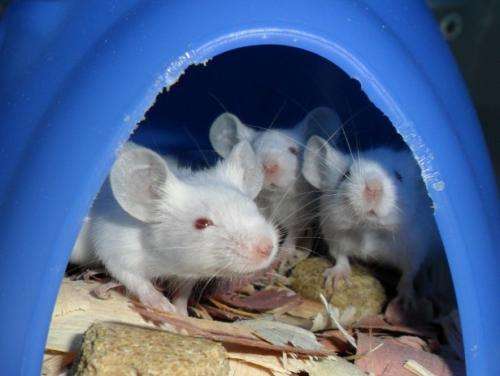Neurons that detect disease: Study reveals how mice avoid their sick peers

Life in a group entails a major risk: that of being exposed to contagious pathogens. To counter this danger, different strategies have evolved in social species. In the case of rodents, specific olfactory signals emitted by sick individuals induce avoidance behavior among their peers. The team of Ivan Rodriguez, professor at the Faculty of Science of the University of Geneva (UNIGE), Switzerland, unveils the neural mechanisms underlying this behavior, in a study published in the journal Current Biology.
The researchers found that the vomeronasal system, specialized in detecting pheromones, identifies signs of disease and plays a key role in the avoidance response of the mouse. These findings reveal a novel function played by this neural system.
Social animals find many advantages to living together. However, close interactions put them at high risk of transmission of pathogens. Various original defensive avoidance strategies have emerged during evolution: some lobster species shun peers carrying a lethal virus, while females of different species of birds reject parasitized males, which they identify through their altered sexual ornamentation.
An innate preference
In the case of rodents, specific olfactory signals emitted by sick individuals induce avoidance behavior among their peers. To determine the neural mechanisms underlying this ability, the group of Ivan Rodriguez, professor in the Department of Genetics and Evolution at UNIGE, conducted a series of experiments. The researchers first compared the behavior of mice with respect to healthy or diseased peers. «Both animals infected with murine hepatitis virus and those made ill artificially were strongly avoided by their healthy peers", says Madlaina Boillat, researcher and first author of the study.
In mammals, the perception of molecules present in the environment occurs through the main olfactory system and the vomeronasal system. The latter regulates innate social behaviors through pheromones detected by a sensor located at the inner extremity of the nose and called the vomeronasal organ (VNO). To determine which neural circuits were involved in the avoidance response, the researchers altered, physically and genetically, the functioning of the VNO of mice. This very specific alteration induced a drastic result: mice no longer showed any preference toward their healthy fellow creatures.
«We have identified the neural system that allows rodents to recognize their sick peers and to avoid them, states Ivan Rodriguez. As for the chemical receptors involved in this process, there are many candidates, but we are currently testing the potential involvement of a family of vomeronasal receptors called Fprs, which we discovered in 2009, in the recognition of sickness related compounds". This new function is thus added to the other roles of the vomeronasal system, known to mediate sexual discrimination against males, females and juveniles, as well as predator avoidance.
What about humans?
Why are we attracted to a particular individual? To date, a single evidence of pheromonal interaction has been demonstrated in our species. The pheromone involved is produced in the underarms of women and affects the menstrual rhythm of other women. This molecule has not yet been identified, but it is perceived by the olfactory system. As to whether the VNO is involved, it is unlikely, as this organ quickly regresses during human development. The mystery remains unsolved, but scientists have not said their last word yet.
Journal information: Current Biology
Provided by University of Geneva


















